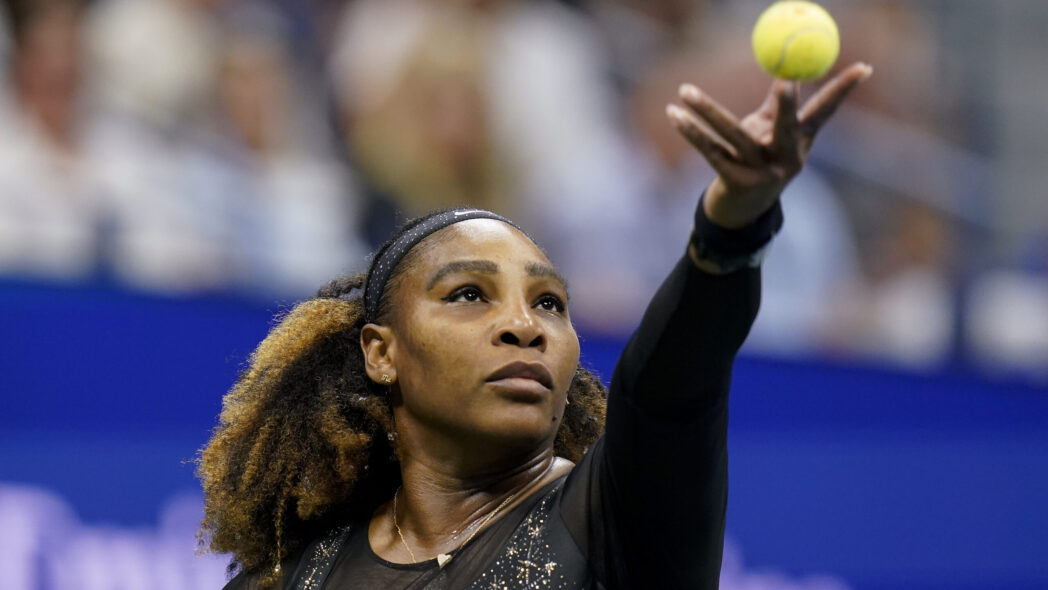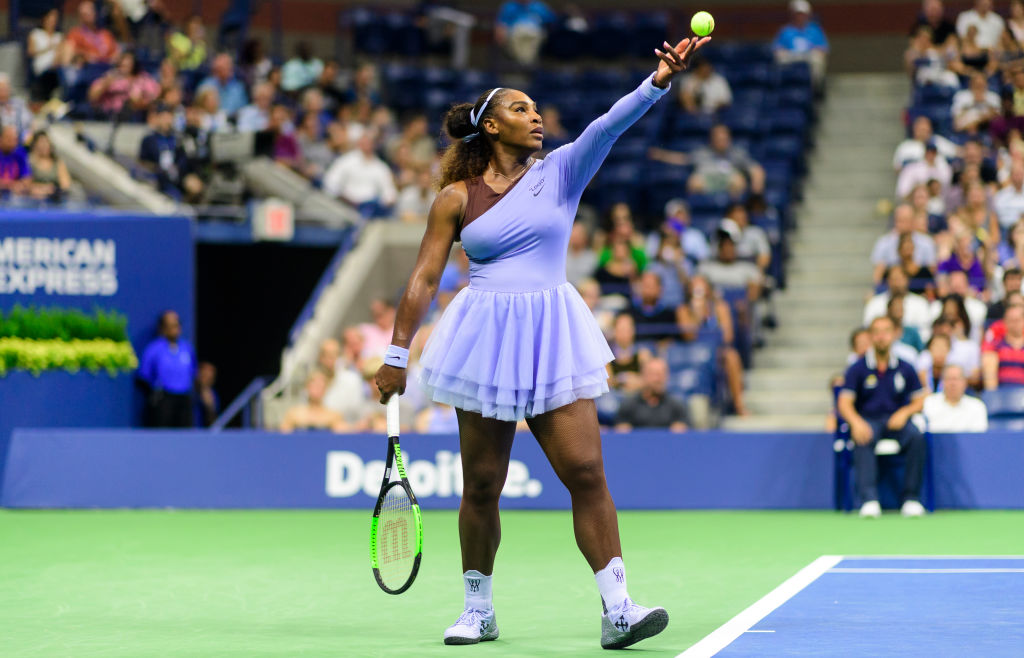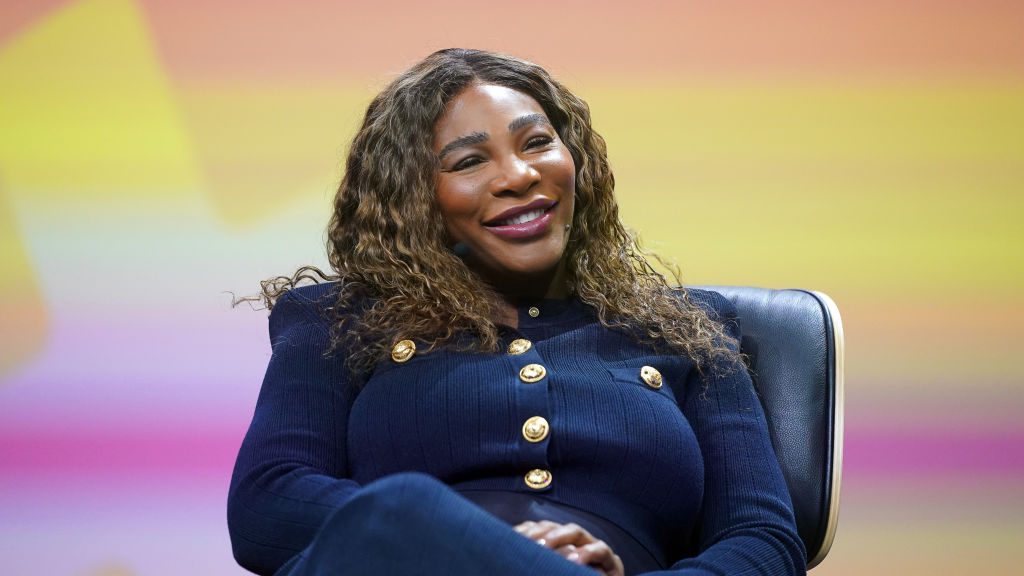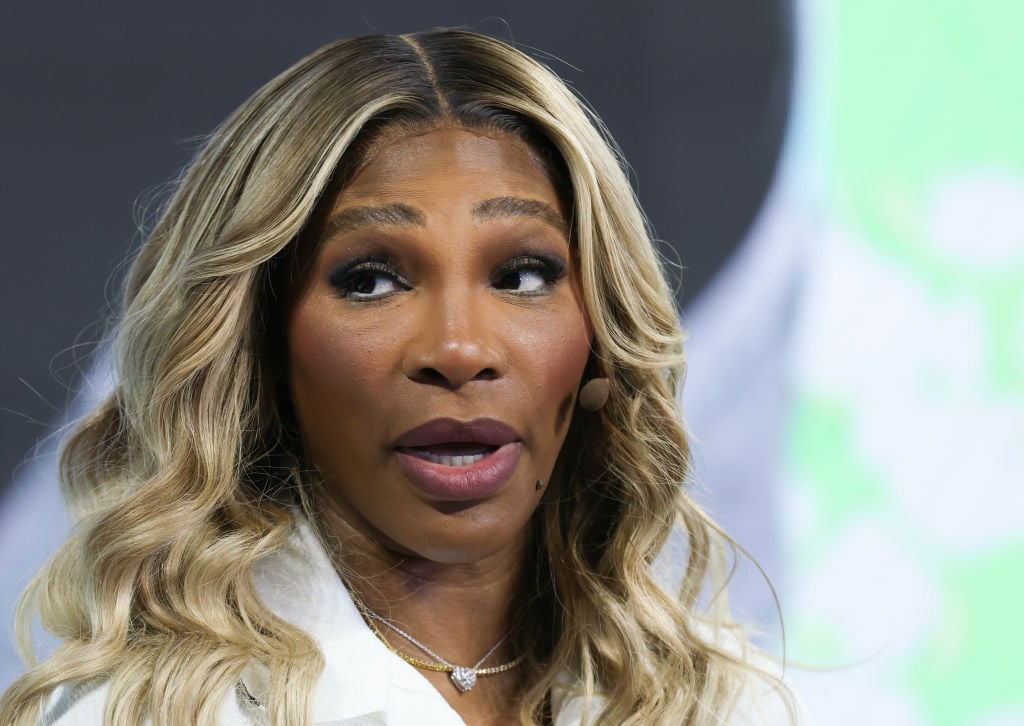When Serena Williams retired, she culminated a groundbreaking career where she won 23 Grand Slam titles while breaking records and battling stereotypes in the media and on the court. Along with her talented sister Venus Williams, Serena continues her legacy by developing her business ventures and being a role model for other underrepresented athletes to carve out a place in tennis and other sports.
The journey of Serena Williams

Serena Williams’s journey into tennis greatness and history started at an extremely young age — 3 years old. The Williams sisters and their parents journeyed from Compton to Florida to advance their tennis careers in a move that would pay off with endorsements and titles.
Early life and family background
Born on September 26, 1981, to Richard Williams and Oracene Price, Serena Jameka Williams followed four sisters, including Venus. Luckily, her father, Richard, saw opportunities for greatness in his daughters, which is why he and his wife taught themselves about tennis from books and videos. With this knowledge, they taught tennis to their children, and eventually moved from Saginaw, Michigan, to Compton, California. By the age of three, Serena had daily intensive tennis training with her father and older sister Venus on public tennis courts.
Rise to prominence in tennis
By 1991, Serena achieved top ranking in the 10-and-under division and began training with Venus under coach Rick Macci at the family’s new hometown of Palm Beach, Florida. Four years later, the 14-year-old Serena had her first professional match in Quebec City but lost to Annie Miller. The defeat was a temporary setback as she rose to number 20 by 1998 and already made history as the fastest player to record five victories against Top 10 players.
The following year, the 17-year-old high school grad signed a $12 million endorsement deal with Puma. As a precursor to her future fashion ventures, she showed up with sketches of how she wanted her tennis outfit to look. She would stay with Puma until 2003, until she signed a larger five-year deal for $40 million with Nike.
Major achievements and milestones

For 319 consecutive weeks, Serena Williams was the number one women’s tennis player in the world, placing her only behind Steffi Graf and Martina Navratilova. In addition, she earned several Grand Slam titles, Olympic medals and shattered records — sometimes doing so with her sister.
Grand Slam titles
The tennis icon appeared in 33 Grand Slams and won a total of 23 of them— the most wins of any player in the Open era. If you’ve never heard of the “Serena Slam,” know that this tennis history refers to 2003 and 2015 when she held all four Slam titles (French Open, Wimbledon, US Open and Australian Open).
Together, Venus and Serena Williams won 14 doubles titles and are undefeated in this category together. However, Serena beat her sister at the 2017 Australian Open — her last Slam win. Her 2015 win made her the oldest woman to win in the Open Era.
Olympic success
With her tennis prowess, it’s no shock that Serena also won Olympic gold medals. She competed in four tournaments in 2000, 2008, 2012 and 2016. As a four time Olympic gold medalist, she earned three playing doubles with Venus and one for singles in the London 2012 games.
Records and awards
Among female tennis players, she has the most career hardcourt titles — 47 of them. She also had 73 career WTA titles and 7 Australian Open women’s singles titles. After winning a total of 6 Grand Slam singles without dropping a set, Serena tied Martina Navratilova’s record.
Influence on the sport of tennis

Despite her strength and immense talent, Serena Williams also dealt with her fair share of challenges, ranging from injuries to sexism, racism and even medical concerns when she had her first child. Despite these issues, Williams never backed down from defending herself and being her own advocate on the court.
Playing style and techniques
In such a trailblazing career that dominated the tennis courts, Serena Williams developed a dominating style that allowed her to break records and make opponents nervous. Her right-handed forehand serve was characterized by the sheer power that her tall (she’s 5’9”) and very in-shape build enabled. She almost broke another record with her speed —her 206.9 km/h serve was the third fastest among female tennis players.
Thanks to intense precision, Williams was three times more likely to serve an ace than the average women’s tennis player. Serena also successfully used her forehand grip to powerfully swing and hit deep returns.
Resilience and overcoming adversity
The Williams sisters came from a large blended family in Compton. Serena once told Essence Magazine:
“Looking back, I’m like, ‘Wow. We lived in a two-bedroom house with seven people.’ I don’t know how my parents were able to make me feel that way, but they did, and it was special.”
The girl from Compton earned over $95 million in prize money and had multi-million dollar endorsements with renowned sports companies as she silenced her critics with obvious talent. Despite such talent and success, Serena Williams and her sister were still young Black women in a sport dominated by White males and officials. They also had to deal with crowds unused to seeing Black Women dominate the tennis court. The media also added to the insults.
At the 2001 BNP Paribas Open in Indian Wells, California, the sisters and their father were booed and called racist slurs, including “n*gger.” As a result of the threats and accusations directed at her family, Serena did a 15-year boycott of the tournament. When she won her third French Open in 2015 against Czech tennis star Lucie Šafářová, instead of congratulating her, some people online compared her looks and actions to being manly and a gorilla. Due to her curves, Williams has also been overtly sexualized when it made no sense.
When Serena wore the infamous black spandex catsuit to the US Open in 2002, Otis Gibson of the Sunday Telegraph wrote:
“On some women [the catsuit] might look good. Unfortunately, some women aren’t wearing it. On Serena, it only serves to accentuate a superstructure that is already bordering on the digitally enhanced…”
Redefining women’s tennis
Serena Williams redefined women’s tennis by playing with unapologetic intensity and power. She also paved the way for female athletes to get better endorsements, which had previously eluded many. Before Puma signed with the 17-year-old Williams in 1998, the company wasn’t involved with tennis athletes for 20 years prior. In addition to Nike, she worked with other brands such as Pepsi, Delta Airlines, JPMorgan Chase and more.
She also fought from the perspective of a mother. Once the tennis pro gave birth, she was vocal about how female athletes and other working women shouldn’t have to choose between being pregnant and still being able to have a career.
Advocacy and empowerment

Serena was never shy about speaking up for herself and gender equality in sport. Her advocacy has helped bring pay and penalty discrepancies to light while influencing other girls to follow her path.
Championing equality in sports
The tennis star partnered with Secret Deodorant and pledged to further gender equality. Part of their work involved a $1 million pledge to support programs and a study on gender bias in sports from the school to the professional level.
Addressing tennis trauma and double standards
Serena had numerous fines in her career. She had $17,000 worth of fines for three code violations during the 2018 US Open. However, she spoke up about the difference in treatment between male and female tennis players regarding this issue. After Alex Zverev attacked an umpire’s chair with his racket, he was removed from the doubles tournament but participated in the singles one. In response, Williams said, “I would probably be in jail if I did that. Like, literally, no joke.”
She also had a $175,000 fine and probation in 2009 without touching anyone, a much more expensive punishment compared to Zverev who could have hit the umpire. The tennis pro received citations for breaking her racket in frustration when defending herself against an umpire call, whereas the same action barely got a response when male tennis players like Roger Federer or Andy Murray did the same. Being strong and standing up for herself hasn’t been lost on diverse players.
A senior who played for Highland Park told CBS News:
“It’s crazy that she’s like 40 years old and she’s able to keep playing and she’s so athletic.”
Kalli Minor, Venus’ tennis double in the film “King Richard,” said the first time she saw Serena on TV:
“I was coming down into the living room and some highlights of Serena Williams popped up, and I guess there was just something about her, seeing how strong she was, seeing someone that looks just like me out there being so strong and in control and looking beautiful.”
Cultural impact beyond tennis

Pregnancy didn’t stop Serena from giving back. She became an ambassador for Allstate Foundation Purple Purse, which supports domestic abuse survivors while she was pregnant with her first child.
Williams also used her media influence to discuss race and bring light to a lingering issue — maternal mortality. She has been a high-profile voice for maternal health issues Black American women face. When birthing her first daughter with her husband, Alexis Ohanian, doctors ignored her concerns that something was wrong. It led to complications that resulted in four surgeries shortly after giving birth, which she disclosed in an essay in Elle Magazine in 2022.
As Dr. Rodriquez, a clinical social worker and the director of trauma-informed services at the NYU McSilver Institute for Poverty Policy and Research in New York City, said about the sports icon:
“Serena Williams has not been afraid to call out racism, to talk about it clearly, and confront it in the media. In many ways, I think one of her contributions has been helping people understand the impact of that and not sidestepping the conversation.”
Her advocacy continued by becoming a UNICEF ambassador, building schools abroad and donating prize earnings to help fight Australian wildfires. However, she has continued to have fun and showcase her style off the court. She took on hosting duties at the ESPYs and became the first athlete to receive the Fashion Icon Award from CFDA.
Legacy and continued influence
Between prize money, endorsements and various business ventures like Wyn Beauty, Serena Williams’s net worth is an estimated $290 million. In addition to helping her become the first athlete to make the Forbes Richest Self-made Woman List, her altruistic ventures with her wealth have sealed her iconic presence beyond tennis. After retiring in 2022, she has continued to make investments in various companies, particularly those that encourage diverse representation.
In 2021, Black women start-ups only received 0.34% of American VC funds and Black-founded startups decreased by 45% in 2022. Luckily, Serena Ventures formed a venture capital fund in 2015 that such owners may access. Underrepresented founders make up about 79% and women owners received 54% of the funding.
Her relationship with Nike has expanded her icon status. Nike World Headquarters added the Serena Williams Building (SW) — the largest building on the site. In response, she said, “I hope this building encourages people to bring out the best of themselves and to dream bigger than they thought possible.”
Many peers had glowing things to say about her. Rafael Nadal said:
“I think she, as an athlete, has been not just a tennis player, but … one of the most important athletes in the history of the sport.”
Coco Gauff said:
“She was able to [transcend] in a sport that’s predominantly white. Before Serena came along, there was not really an icon of the sport that looked like me.”
Ons Jabeur added:
“Her and Venus, to be honest with you. It’s unbelievable what they did for this sport.”
While her tennis career is in her rear-view mirror, Williams’ mark on the sports world and beyond will remain. Stay tuned and learn more about Serena Williams on theGrio.





